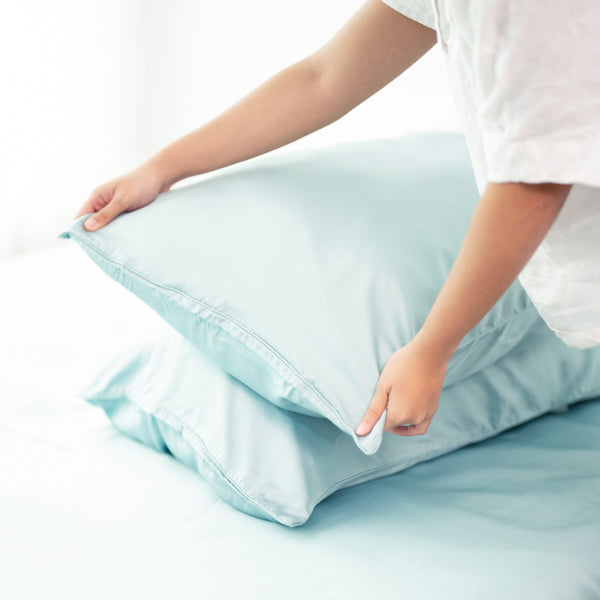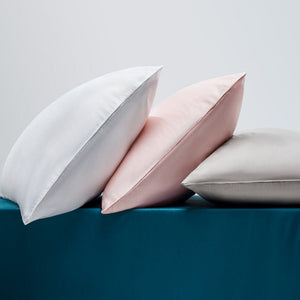Getting good sleep is as important as eating a balanced diet full of nutrients and exercising. You cannot ignore how incredibly important sleep is for your physical and mental health and well-being.
Sleep helps restore and repair the body, helps to improve mood and cognitive function, and can help to reduce stress levels. Lack of sleep can have a negative impact on overall health, so it's important to make sure that you get enough shut-eye each night.

Ideal Sleep Duration
Lack of sleep can lead to bad moods the next day. Over time, not getting enough sleep can cause serious problems, like problems with blood sugar levels and workouts. Getting regular quality sleep can help improve these issues.
Most adults need between 7 and 8 hours of sleep each night to feel well-rested and function at their best during the day. Depending on their individual circumstances, some people may need a bit more or less sleep than this.
For example, people who are pregnant or recovering from illness may need more sleep, while those who are used to getting by on less sleep may require less. Ultimately, it is important to listen to your body and get as much rest as needed.
Otherwise, practice good sleep hygiene habits such as adopting a good sleep position, avoiding caffeine before bed, and establishing a regular sleep schedule. You can get the rest you need to feel refreshed and energized each day with a little effort.
In general, aim to get at least 7 hours of sleep each night. This will help you feel your best during the day and keep your body healthy. If you have trouble sleeping, talk to your doctor to see if there is an underlying cause that can be treated.

Best Time to Sleep
Our body and brain both slow down as it gets dark at night and starts waking up as the sun rises.
However, the best time to sleep depends on when you want to wake up. To determine what bedtime would work best for you, start by deciding what time you need to wake up. Then, count back the number of hours of sleep you need.
For example, if you want to wake up sometime between 7:00 and 8:00 a.m., you would need to go to bed:
- Infants: between 7:00 and 8:00 p.m.
- Toddlers: between 7:00 and 9:00 p.m.
- Preschool children: 8:00 or 9:00 p.m.
Most people need between 7 and 8 hours of sleep a day. You can use this number to help you set a bedtime.
Best Sleeping Positions
When we sleep, our bodies work to heal and repair themselves. The position we sleep in can help or hinder this process, depending on how well it supports the natural curvature of our spine. People often wake up with new aches and pains in the morning caused by sleeping in an awkward position.
We spend a lot of time asleep or resting, so it's important to choose a sleep position that helps our bodies recover physically. A good sleep position can reduce stress on our spine, while a bad position can cause pain or stiffness in our back, arms, or shoulders and lead to poorer-quality sleep.
There is no one "best" sleep position, as what is comfortable and promotes healthy spinal alignment varies from person to person depending on their health situation. However, sleeping in a position that keeps your spine in alignment from your hips to your head is ideal.
A few different sleeping positions are considered to be the best for overall health. These include sleeping on your back, sleeping on your side, and sleeping on your stomach. Each of these positions has different benefits that can help to improve your health in various ways.
Sleep on Your Side
There are many benefits to sleeping on your side, including reducing snoring, improving circulation, and preventing back pain. Sleeping on your side can also help to reduce wrinkles and prevent drooling.
If you are pregnant, sleeping on your side can help to improve blood flow to the fetus and prevent stillbirth.
There are a few things to keep in mind when sleeping on your side, such as using a pillow that supports your head and neck and avoiding sleeping on your stomach if you have back pain.
You may also consider using a body pillow or placing a pillow between your knees to reduce strain on your hips and lower back. Overall, sleeping on your side is generally considered safe and can offer several health benefits.
Side sleeping may be particularly beneficial for:
- Pregnant women
- People with acid reflux
- People with back pain
- People who snore or have sleep apnea
- Older people
Sleeping on Your Back
Sleeping on your back is generally considered to be the best sleeping position. It allows your head, neck, and spine to rest in a neutral position. This reduces the chances of experiencing pain or discomfort in those areas.
Sleeping on your back minimizes the risk of developing wrinkles, as it back prevents your face from coming into contact with your pillow. If you are struggling with snoring or sleep apnea, sleeping on your back can also help to reduce these symptoms.
Overall, sleeping on your back is the best way to ensure a comfortable and restful night's sleep.
Back sleeping may be particularly beneficial for:
- People with lumbar spinal pain
- People worried about wrinkles
- People with neck pain
- People with nasal congestion
Sleeping on Your Stomach
There are a few benefits to sleeping on your stomach, such as reducing snoring and minimizing wrinkles.
However, there are also some potential drawbacks, such as neck and back pain. Ultimately, you should sleep in whatever position is most comfortable for you.
If you choose to sleep on your stomach, be sure to use a pillow that supports your head and neck.
Choosing the Right Mattress and Bedding
A good mattress and bedding are essential for comfortable sleep. A good mattress provides the right support for your back and spine, while a good bedsheet and pillow helps keep your head and neck aligned. Together, they help you sleep comfortably and wake up feeling refreshed.
When choosing a mattress and bedding for comfortable sleep, there are a few things to keep in mind.
First, consider the type of sleeper you are. If you sleep on your stomach, you'll want a firmer mattress to prevent sinking in. A softer mattress may be more comfortable for side sleepers, as it will provide more cushioning for the hips and shoulders. Back sleepers generally do well with a medium-firm mattress.
Once you've determined the firmness level you need, take a look at the materials used in the mattress. Innerspring mattresses are the most common type, but they may not be ideal for everyone. You may want to avoid innerspring mattresses if you have allergies, as they can harbor dust mites.
Memory foam and latex mattresses are good options for people with allergies, as they aren't as likely to harbor dust mites.
Choosing a bedsheet may also require some thought. Nowadays there are many soft and premium high thread count bedsheets out there in the market that will help you sleep better. Tencel bed sheet is one of the products that can really transform the way you sleep and combined with the right mattress, you can experience sleep like never before!
Find What Suits You Best
The best position to sleep in depends on many factors, such as whether or not you have any medical conditions, your comfort level, and what position allows you to get the best night's sleep.
If you are comfortable sleeping on your back, that is generally considered the best position for sleeping, as it allows your head, neck, and spine to rest in a neutral position.
If you have any medical conditions that might be aggravated by sleeping in a certain position, however, consult your doctor before changing your sleep position.
Ultimately, the best position to sleep in is the one that allows you to get the best night's sleep and feel the most comfortable.





